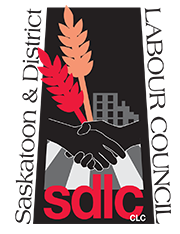Joint media release from SGEU, CUPE and SEIU-West
March 29, 2023
REGINA, Sask.—Three unions representing workers at over 70 community-based organizations (CBOs) across the province are condemning the provincial budget for yet again failing to meet the needs of Saskatchewan’s most vulnerable residents.
On March 22, the Government of Saskatchewan announced an increase of $17.6 million to CBOs in the province—funding that is much needed but not nearly enough, according to the Canadian Union of Public Employees (CUPE), Service Employees International Union West (SEIU-West), and the Saskatchewan Government and General Employees’ Union (SGEU). The unions renewed their call for adequate, multi-year funding that will allow CBOs to reliably support their communities.
“Without multi-year funding, it is impossible for these organizations to plan ahead,” said SGEU President Tracey Sauer. “Minister Harpauer is all too willing to acknowledge the uncertainty her own government faces while planning a budget, but she refuses to extend that same understanding to organizations that have been in a precarious situation for decades. It’s just not working.”
CBOs have been calling for multi-year funding for well over a decade. The three unions first raised the issue with Finance Minister Donna Harpauer fifteen years ago when she held summits with CBOs in her portfolio as the Minister of Social Services.
“We asked for it then, and we have been asking for it every year since. These organizations need to operate initiatives on an ongoing basis,” said Judy Henley, president of CUPE Saskatchewan. Their clients need services they can count on year over year and the current model is simply not conducive to providing that stability.”
CBOs needed more than ever
CBOs are non-profit organizations that provide a variety of services to support vulnerable people in Saskatchewan, including caring for people with disabilities, supporting people with mental illness or substance abuse issues, responding to domestic violence calls, providing emergency childcare, or assisting newcomers to Canada.
CBOs are being stretched to their limits as they deal with higher operating costs while also seeing an influx of people relying on their services due to social and economic factors like the cost-of-living crisis and worsening addictions crisis.
“Saskatchewan has one of the worst domestic violence rates in Canada, we are among the worst for child poverty rates in Canada, and we continue to see record-high overdose deaths. At the same time, the province is seeing record population growth, a large portion of which is due to immigration,” said SEIU-West President, Barbara Cape. “In each of these areas, CBOs undertake vital work to fill the gaps of government programs. But these gaps are only getting larger, and our organizations are expected to do more with less.”
The unions pointed to a lack of funding across the board, including the recently announced $30 per month increases to Saskatchewan Income Support (SIS) and Saskatchewan Assured Income for Disability (SAID), which amounted to ten times less than what advocates were asking for.
-30-
Ellen Paulley
Communications Officer, SGEU
306.775.7877
Leanne Hendriks
Communications Coordinator, SEIU-West
306.652.1011 ext. 2244
Tria Donaldson
Communications Representative, CUPE
306.531.6247
About SGEU
The Saskatchewan Government and General Employees’ Union (SGEU) has been working together for Saskatchewan since 1913. Today, SGEU represents 20,000 members in six sectors across Saskatchewan. Visit sgeu.org to learn more.
About SEIU-West
Service Employees International Union West (SEIU-West) represents over 13,000 people across Saskatchewan. They include people who work in health care, education, municipalities, community-based organizations, retirement homes, and other sectors. They are joined by one colour—purple—and one union, SEIU-West. Visit PurpleWorks.ca to find out more about SEIU-West members.
About CUPE
The Canadian Union of Public Employees is the largest union in Saskatchewan, representing over 30,000 public sector workers in a variety of sectors, including education, social services, child care, health care, municipalities, libraries and universities.






